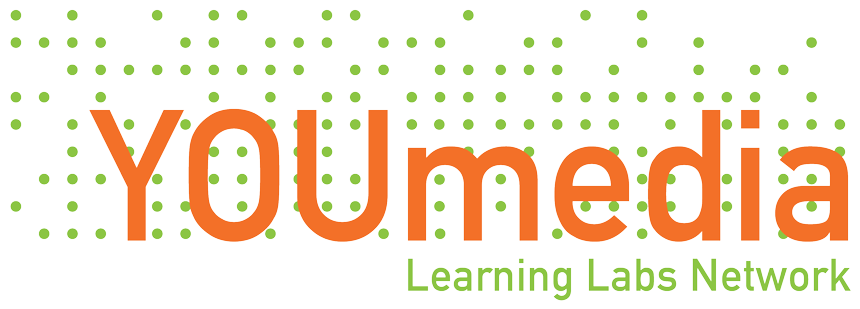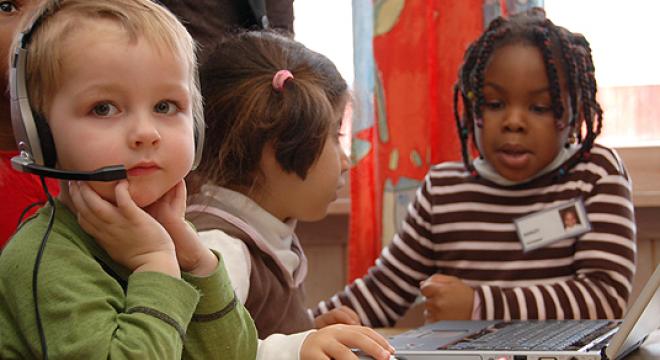In today’s digitally saturated climate, when toddlers are using iPads and new technologies are finding their way into classrooms, it may be easy to assume that today’s kids are what learning and technology expert Marc Prensky described as “digital natives” in his provocative 2001 paper “Digital Natives, Digital Immigrants.” “Today’s students are no longer the people our educational system was designed to teach,” he wrote. “Our students today are all ‘native speakers’ of the digital language of computers, video games, and the Internet.”
While the term has become controversial since Prensky penned the phrase, the idea is still relevant—and the social perception of the “new students” Prensky was talking about continues to shift with the birth of new digital tools. However, the question that many experts are asking remains: does a fluency in new media tools like Facebook and Apple TV equate to digital savviness?
We certainly aren’t at a loss for claims of digital savants, with headline after headline claiming kids are naturally more adept at using digital tools than earlier generations. Part of the reason for this misconception, explained chief scientist of the DaVinci Science Center David Smith, is that each generation is comfortable with different digital tools, creating a sort of generation gap in understanding. “I see it in my own daughter,” Smith said. “Kids are migrating through a set of technology tools that are accessible to them on the devices they have, which are usually smart phones. We’re all using different tools.”
Smith thinks that a generation gap is inevitable so long as teens continue to seek digital refuge from parents. “Kids are going to quite deliberately seek out social media that their parents and teachers are not engaged with, and they will teach each other how to use those tools. They were into Facebook until parents got on Facebook. Now, they’re not so much on Facebook anymore, but they’re on Instagram, SnapChat, and Vine. So now my daughter’s on three or four social platforms, but doesn’t have an email account, or some of what I consider to be core digital literacy tools,” he said.
“To a lot of kids, digital literacy is focused on social media, and less so on understanding the digital infrastructure that lies behind all that.” That has echoes of Neil Selwyn, a frequent critic of the “digital native” riff. He sees youth’s engagement with technology as “passive, solitary, sporadic, and unspectacular”
And sometimes, the assumption is just that, an assumption. In a post on his blog, Coffee for the Brain, gifted education teacher Aaron Maurer put it this way.
“I see time and time again examples in my classroom where students are not able to perform very simple functions with technology,” said Maurer, who teaches grades 4-8 for the Bettendorf Schools in Iowa. “I think there is this mystique with kids that we think they can do everything with technology. I won’t argue that they know how to text, watch YouTube (perhaps make YouTube videos), and anything related to viewing media.”
While Maurer explained that this is not the case for every student, he did note that it was a trend in his classroom. “The more I push technology, web 2.0 tools, wiki, etc. into my class to help flatten the education atmosphere the more I realize that they are clueless,” he said. “They need to be taught.”
So, when it comes to being “savvy,” what exactly is the media talking about? “The landscape is so complex, that it becomes difficult to talk about what it means to be literate anymore,” said Smith. “You might think you’re digitally literate with some technology, but would you know what to do with a Raspberry Pi if I put it in front of you? Maybe, but maybe not.”
Indeed, society might be at an odd moment when a person can paradoxically be tech savvy and computer illiterate, caught between different eras. Just because students are adept at using certain tools—that are often designed and marketed specifically for them—doesn’t mean they comprehend the scope of such tools, or that they possess the critical thinking skills necessary to navigate the online worlds made accessible by these new technologies.
Nor can they necessarily navigate unfamiliar technology. Or as a recent Hechinger Report blog post put it, “They’re all over Twitter but they don’t know how to save a Word document.”
Technology coordinator for a Chicago public school Kenyatta Forbes would agree. She sees daily how introductory concepts, like using email, often cause roadblocks for her students, as she explained in a recent interview for Common Sense Media.
“Even in the position as a technology coordinator for the past two years I found that I was doing a lot of foundational skills with my eighth graders—skills like formatting a Word document,” she said. Her vision for her school, like many other technology coordinators, is to cover those basic concepts in Grades K-2 in order to prepare sixth, seventh, and eighth graders for media classes that take a more critical approach to the ways in which new media tools can be used. “We need to take those foundational skills and get creative with it,” Forbes argued. “Those are the skills they’ll need for the future: creativity and innovation.”
This merger of education, technology, creativity, and innovation Forbes is talking about is the same kind of synchronistic approach researcher and expert Mimi Ito has helped integrate into the Learning Lab model. In a study gauging how digital media influences the way kids learn, Ito and colleagues identified three progressive stages of engagement and learning: hanging out, messing around, and, theoretically, geeking out.
Each stage is slightly more involved, digitally, with “geeking out” the ultimate deep dive, and likely most digitally fluent. As the study of the first YOUmedia space in Chicago, conducted by the University of Chicago Consortium on Chicago School Research, noted, the transition from the first two phases into the geeking out stage isn’t as seamless as some programmers and designers had imagined. Perhaps they fell victim to the assumption that young people could move seamlessly through the stages. In fact, Learning Lab mentors are finding that they need to spend more time on the hanging out and messing around stages to get kids up to speed.
Smith, who also helps run DaVinci’s online Learning Lab, the Virtual Studio, has run into this issue. “What we have found as we have started to work with some of the youth in Allentown is that the technology that they are savvy with is not the same technology that we are using. They might have smart phones, but that’s it,” he said. “For example, we really stumbled trying to get kids onto the virtual world, and what tripped me up is that kids don’t have email addresses because they aren’t using email to communicate with one another.”
Smith said students’ unfamiliarity with email would lead them to forget or lose passwords, while others would be unable to confirm their identity securely—a requirement before signing onto their site. “It was getting to the point where if I wanted to get kids in the studio I would have to create email addresses for them,” he said. “It turned out to be a big stumbling block.”
Architect and mentor to Nashville’s forthcoming Learning Lab Dominique Arrieta touched on this as well. She has spent this past year helping a group of local youth design the physical elements of their new space, accounting for everything from technology and amenities to lighting and the logistics of the lab’s infrastructure. They’re using online design programs, which can be complicated.
For Arrieta one of the biggest takeaways from the project is to abandon any preconceived ideas about students’ abilities. “I’ve learned not to guess what they know, or assume anything, and to ask questions,” said Arrieta.
Meeting kids where they are, regardless of skill level or their background experiences, is one of the strengths afforded by the Learning Lab model. Not only is the space unaffected by test scores and outside pressures, but it is also built around an adaptable curriculum. This empowers mentors to modify the kinds of projects they facilitate to not only match students’ skill levels, but also adjust to their fluid interests.
Ideally, mentors and programmers will help coax more students into “geeking out,” but until then, we may have to take one step back to move two steps forward.
By Kelsey Herron
Photo credit: Juan Cristobal Cobo

